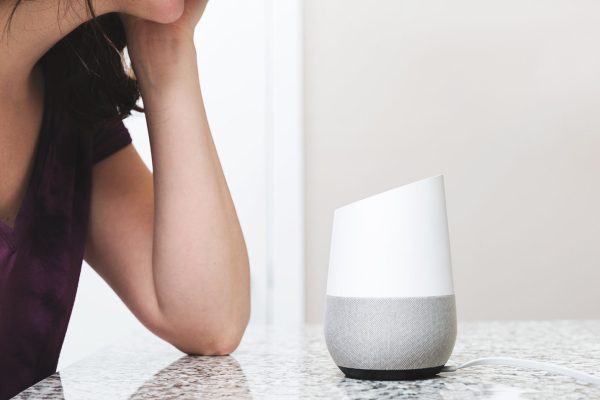Published on the 07/08/2019 | Written by Heather Wright

Hey Alexa, can I really trust you with my shopping?…
Keyboards, mice, cicks and taps are just so passe…
At least that’s the thinking behind voice commerce, which takes ordering and purchasing things online to a new level, having customers call out their orders to virtual assistants via devices such as Amazon Echo or Google Home.
If you read ‘headless’ ecommerce vendor Elastic Path’s recent report, The Sci-Fi Shopper, suggests that businesses are missing out on a big opportunity with 57 percent of consumers interested in checking out via voice, but only 23 percent of brands offering that experience. (Checkout-less payments topped the list of things customers are either already using or would like to use, at 67 percent, despite just 18 percent of brands offering it.
“Most of the time the intelligent agent made us go find the answer.”
But even that report – driven as it is by an ecommerce vendor – admits that the majority of customers (81 percent) haven’t tried using voice technology to make purchases.
“[But] early adopters are hooked. Of the Sci-Fi Shoppers who have used voice technology to make purchases, 22 percent use it multiple times a week and 21 percent use it at least weekly.”
Elastic Path isn’t the only voice commerce enthusiast by a long way. It’s a growing buzz and some retailers are already betting big on it.
Take US giant Walmart. Earlier this year it partnered with Google for voice assisted grocery shopping. A quick, Hey Google, talk to Walmart, and Google Assistant will add items to a customer’s shopping cart. The grocery chain expects to expand its offering to other platforms in the future.
In Walmart’s case, customer purchase records will be linked with Google Assistant to help accurately identify items customers are asking for.
And therein lies one of the big issues with voice commerce. Browsing using voice commands is, at best, problematic. How many of us know the exact name and description for the product we want to purchase – without the aid of any images or descriptors?
Forrester Research recently tested the intelligence of the intelligent agents – aka voice assistants – relied on for voice commerce. The results weren’t optimistic.
The researchers asked Amazon Alexa, Apple’s Siri, Google Assistant and Microsoft’s Cortana 180 questions, such as ‘what’s the best waterproof mascara?’, across a range of industries from consumer retail to travel, financial services and healthcare.
The result? Just 35 percent of voice search questions were answered, with many of the voice searches resulting in the IA advising that it didn’t know the answer.
“Most of the time the IA made us go find the answer,” note Forrester analyst Collin Colburn, and researcher Arleen Chien. The IAs, relying heavily on search results from the likes of Google for answers, were also stumped by follow’up questions.
eMarketer, meanwhile, says only a small number of people are using speakers for shopping. The marketing research provider forecast voice commerce to reach US$2.10 billion in the US last year. While that’s not a number to be sneezed at, it is just 0.4 percent of US ecommerce sales.
“In fact, eMarketer has lowered its projections for smart speaker buyers and shoppers since its Q2 forecast,” eMarketer says. “While more than one-quarter of users (27.0 percent) will actually make a purchase using a smart speaker next year [2019], it falls below the nearly 31 percent previously projected.”
Even Elastic Path admits miscommunication is an issue: 37 percent of respondents in its survey said miscommunications and errors were the key reason they wouldn’t use devices like Alexa or Google Home to make purchases. Another 11 percent cited a lack of trust in the device making the correct purchase.
Says eMarketer principal analyst, Andrew Lipsman: “For the time being, voice commerce is probably best suited to replenish goods, where the shopper already knows what they want and can utter a simple command to reorder that product.
“Reordering is where voice commerce will gather momentum in 2019.”



























